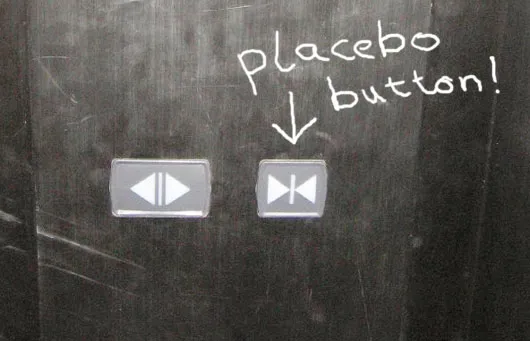Buttons are everywhere: throughout your day you press them on phones, alarm clocks, keyboards, elevators, dishwashers and of course on the computer screen. Although buttons did not exist in old nature – taken that nipples do not count as buttons – the little symbols of control have been ubiquitous throughout most of our lives. But for how long?
As technology advances, buttons are replaced by sensors, gesture technology and autonomous systems. In fact, it may well be that our grand-grand-children won't be pushing buttons like we do, as for them the entire environment has become an interface (again).
Although buttons may one day be grand-grand-parents technology, the current generation of people is still so used to pushing buttons, they are increasingly applied as skeuomorphs, meaning that they have no effect or function and are merely providing the user with a decorative feedback. Such buttons are called placebo buttons.
Examples of placebo buttons are unwired walk buttons at pedestrian crossings in New York City and door-close buttons in elevators, which functioning has been replaced by sensors. In some cases the button may have been functional, but may have failed or been disabled during installation or maintenance. Sometimes the button have been deliberately designed to do nothing besides establishing a illusion of control in the mind of the user.
Now one wonders about that big red button in the White House... could that one be a placebo too? Well allright, better not to try if that one just now.
Related: The buttons, Switch Critters – can you make them switch?, The powerbutton button, Magical interaction, Simulating old nature on next nature, Your grand-grand-parents new media, A society of simulations. Thanks Selby.


Comments (0)
Share your thoughts and join the technology debate!
No comments yet
Be the first to share your thoughts!